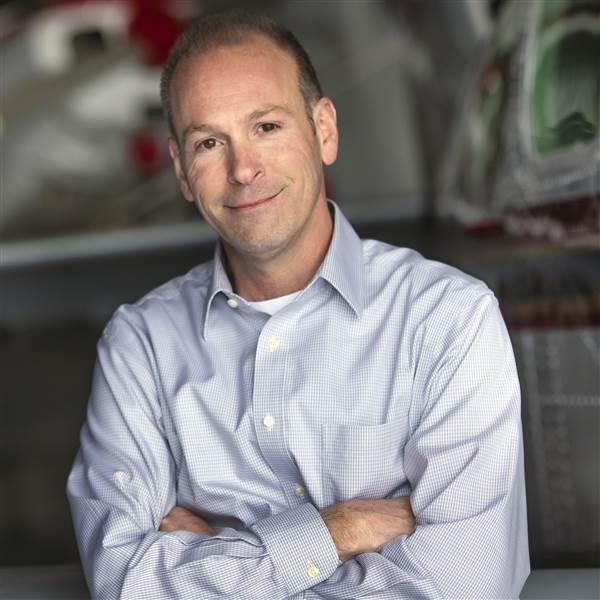ATP celebrates 40 years
Says hiring need remains strong for career pilots
ATP Flight School is celebrating a milestone in October: 40 years of training pilots for a career in aviation—and the number of pilots they’ve touched is impressive.

ATP's Arlington, Texas, training center (top). ATP is taking delivery of 40 new Cessna 172 Skyhawks in 2024, including one with a special paint scheme that features the names of thousands of ATP graduates (below).
“Forty-thousand individual pilots have come through ATP,” said Michael Arnold, ATP Flight School vice president of marketing. “That could be the individual ATP certification programs that we did when ATP first started in the 1980s and ’90s. That also includes our CTP [certification training program] operations out in Dallas. But if we look at all the pilots that we’ve touched over the past 40 years, it’s 40,000.”
ATP celebrates the legacy and impact of its alumni on October 3 during a fortieth anniversary reception at the American Airlines CR Smith Museum in Fort Worth, Texas, followed by an ATP Alumni Career Expo at its Arlington training center on October 4.
Despite some industry headwinds—including new airliner deliveries lagging behind schedule—long-term professional pilot hiring demand looks promising, bolstered by significant airline pilot retirements.
“So, there’s no secret, we’re facing a couple of industry hurdles right now,” said Ashley Pillon, ATP Flight School director, airline and corporate partnerships . “The airlines are having issues with their aircraft production and they’re taking the steps as best they can to mitigate the impact on their operations. I think the good news is the travel demand is there. The hiring need is there. As soon as we get those deliveries, these airlines are going to be in the position to need to play catch-up.”
 Pillon said mandatory pilot retirements will be staggered over the next eight years. “American has the peak in mandatory retirement first, then United, then Delta, and then early 2030 is when Southwest will see theirs. We’re still going to have the need to hire. It might be a little bit slower of a process out of the gate, but we’re still seeing that there’s going to be this tremendous number of retirements coming, which is beneficial for anyone who’s looking to really make a career change and embark on this journey.”
Pillon said mandatory pilot retirements will be staggered over the next eight years. “American has the peak in mandatory retirement first, then United, then Delta, and then early 2030 is when Southwest will see theirs. We’re still going to have the need to hire. It might be a little bit slower of a process out of the gate, but we’re still seeing that there’s going to be this tremendous number of retirements coming, which is beneficial for anyone who’s looking to really make a career change and embark on this journey.”
With 800 to 1,000 daily training flights, ATP is likely the largest operator of piston GA aircraft in the world. “Fifty-thousand flight hours per month and doing it as safely as we can, considering what it is we’re doing: working with relatively low-time pilots and working in the training environment,” said Arnold. ATP mitigates risks by incorporating the best practices of the airline industry into general aviation operations. “When you look at our SMS, our safety management system, and different policies and procedures and flows that we put in place—and new technologies to be able to accomplish what we do safely—we really do try to mimic the airlines more than just training our pilots.” And ATP’s fleet of training aircraft continues to grow; 135 new Cessna Skyhawk aircraft are on order, with deliveries scheduled through 2026.
Over the past year, 1,190 ATP graduates were hired by airlines. “As far as initial placements, at airlines, at corporate operators, we are actually on pace to meet or exceed that this year,” said Pillon. “And the reason for it is we have the volume of partnerships that we have, and that we have pathway style partnerships to support our graduates and their career advancement. When we track all our placements and not just initial placements, we’ll see about half of them going to regionals and the other half split amongst legacy majors, fractional ownership operators, and cargo as well.”
“Seniority is everything,” said Arnold, offering advice for aspiring career pilots. “You want to get there first, you want to get there established. We know the airline industry, it’s subject to change, it’s very volatile. And so, you want to keep your options open and that helps you get to your end goal quicker. That’s why at ATP we focus on 38 different partnerships. We provide our students the best options to keep them moving their career the fastest. So, set your eyes on the end goal, get to the airlines as quickly as you can to establish your seniority. That’s the best advice we have.”



